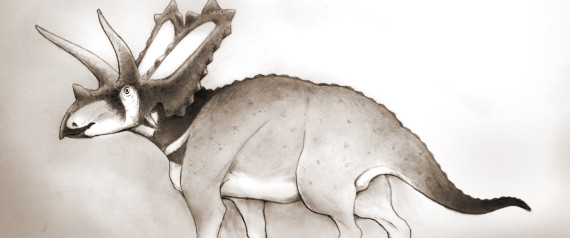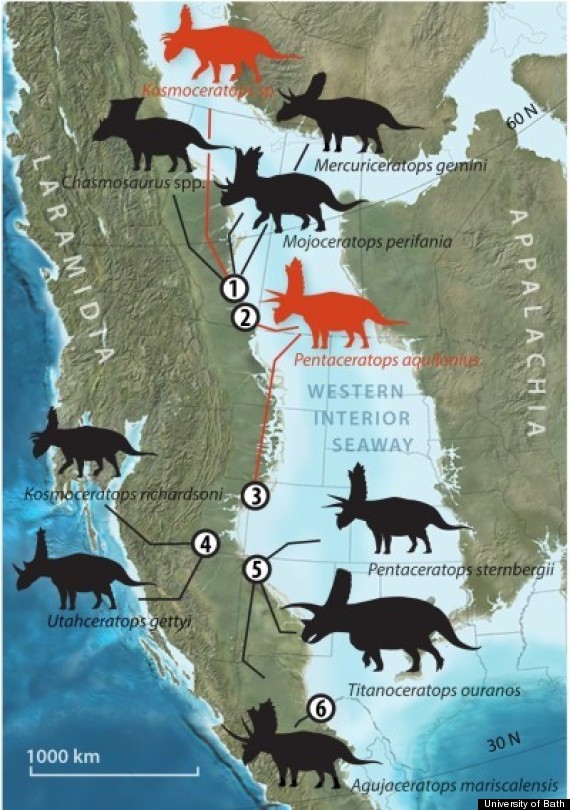New Dinosaur Species Discovered When Scientist Takes Fresh Look At Museum's Fossils

After languishing in a museum for more than 75 years, a set of fossils has been given a fresh look--and it turns out the fossils belong to two never-before-identified species of horned dinosaur.
"We thought we had discovered most of the species, but it seems there are many undiscovered dinosaurs left," Dr. Nick Longrich, the University of Bath paleontologist who made the discoveries, said in a written statement. "We've really only just scratched the surface."
The fossils had been housed at the Canadian Museum of Nature in Ottawa.
The newly discovered species are Pentaceratops aquilonius, a smaller cousin of the beloved horned plant-eater Triceratops, and another horned plant eater belonging to the genus Kosmoceratops. The dinosaurs roamed western North America at the end of the Cretaceous Period, around 75 million years ago.
(Story continues below image.)

Western North America hosted a remarkable diversity of dinosaurs, and among the most diverse clades was the Chasmosaurinae, a group of large, horned dinosaurs.
The fossils previously had been classified as two other species, Anchiceratops and Chasmosaurus.
Longrich has proposed that the horned dinosaurs likely migrated from one part of North America to the other, diverging to form new species -- and only competition between the species prevented the dinosaurs from moving between the northern and southern regions of the continent.
"With Cretaceous dinosaurs, we see a lot of large species in a single habitat," he said in the written statement. "They also tend to be very regional--as you move from one habitat to another, you get a completely different set of species."
A paper describing the discoveries was published in the September 2014 edition of the journal Cretaceous Research.
--
__._,_.___

No comments:
Post a Comment